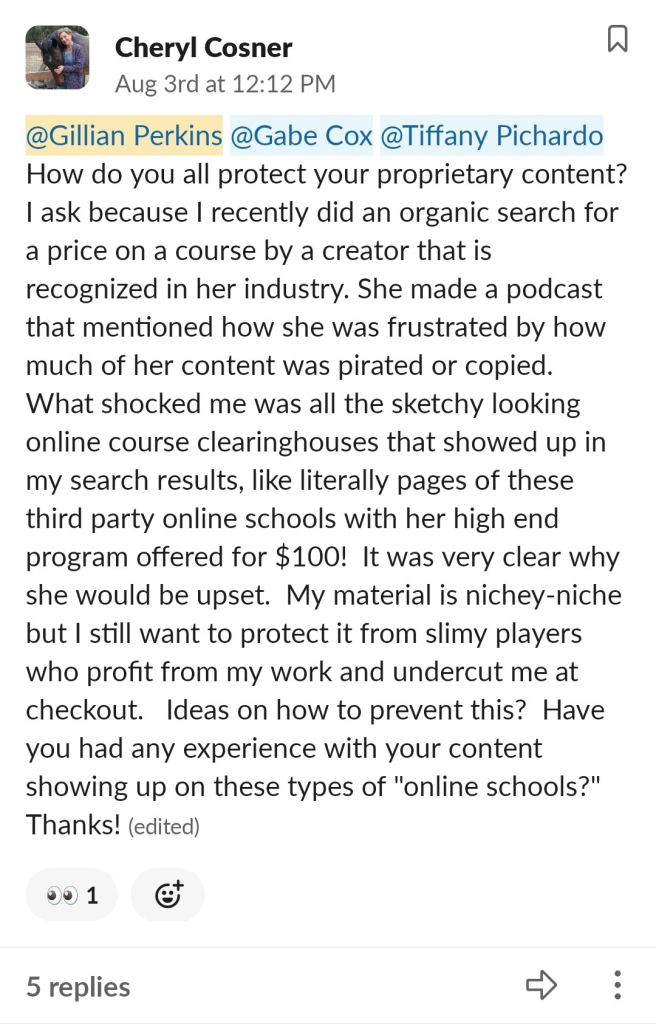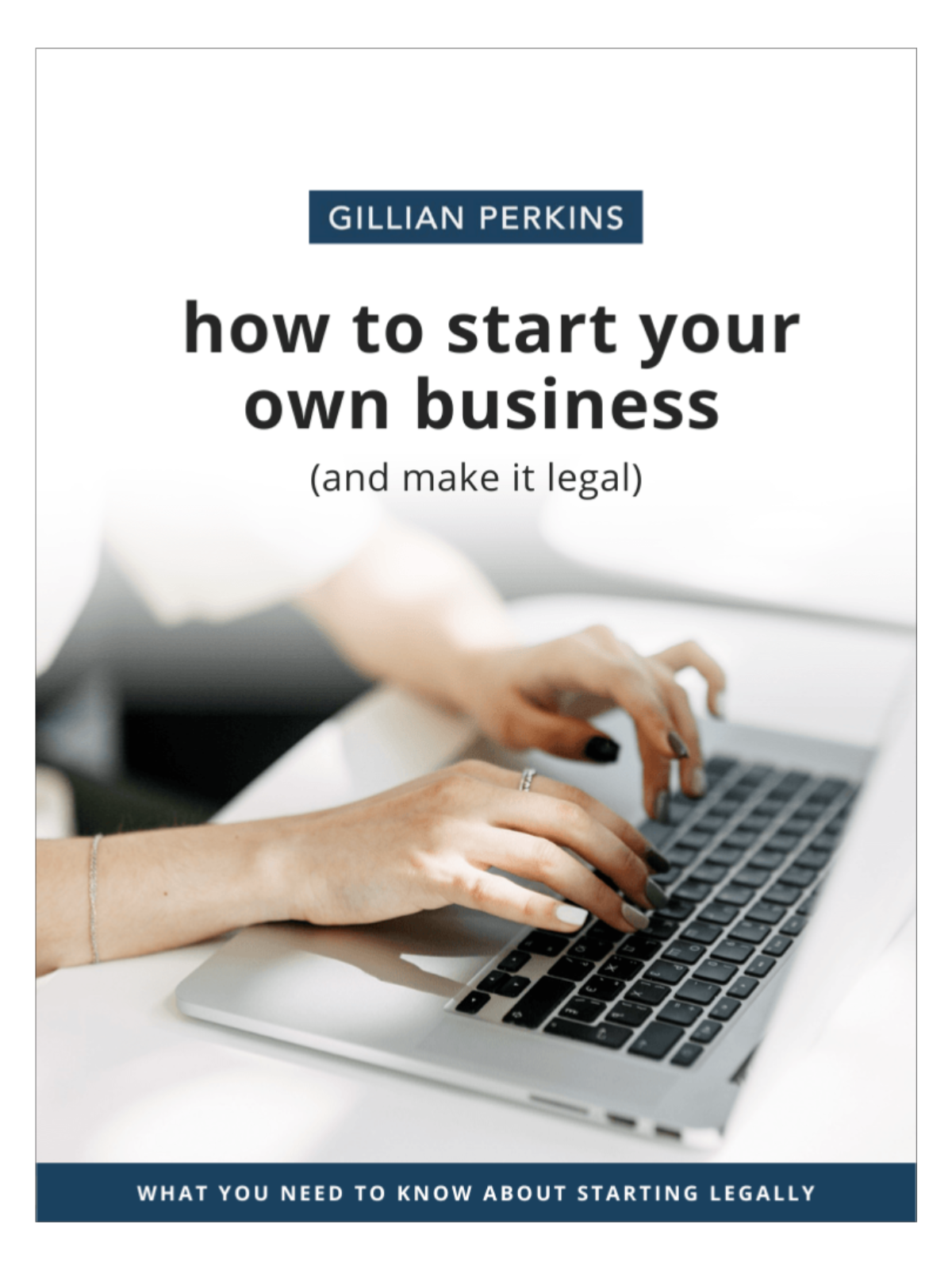how to PROTECT your online course from pirates
Today I'm answering a question from Startup Society member, Cheryl Cosner. Cheryl wrote:
“How do you protect your proprietary content? I asked because I recently did an organic search for a price on a course by a creator that is recognized in her industry.
She made a podcast that mentioned how she was frustrated by how much of her content was pirated or copied. What shocked me was all the sketchy-looking online course clearing houses that showed up in my search results. Like literally pages of these third-party online schools with their high-end program offered for 100.
It was very clear why she would be upset. My material is nichey niche, but I still want to protect it from slimy players who profit from my work and undercut me at checkout. Ideas on how to prevent this? Have you experienced this with your content showing up on these types of online schools?“
Online course creators invest significant time and effort into crafting valuable content for their niche audiences. However, the risk of piracy and content theft looms large in the digital world. Let’s explore some strategies and insights on how to safeguard your proprietary content as an online course creator!
1. Trust is Key
The first thing to remember is that most potential customers hesitate to buy from sketchy-looking online course clearing houses that offer courses at a fraction of the original price. People are willing to pay more for a product if they trust the creator. Building trust with your audience is paramount to ensure they choose to purchase your content over alternatives.
Related: How to Create an Online Course THAT SELLS (from a 7-figure course creator)
2. Trademark Your Product and Terms
Consider trademarking the name of your product and any proprietary terms associated with it. This legal step can help protect your brand and intellectual property. It's worth noting that trademarking can be a bit expensive, but if your product has significant profit potential, it's a smart move. Consult with a trademark lawyer who specializes in online business to navigate this process effectively.
3. Secure Your Content
Make it challenging for individuals to download and share your content on other platforms. Avoid providing easy download options for videos, PDFs, or other course materials. Instead, embed your content directly on your website without download buttons. For worksheets or resources, present them as interactive forms on your site, making it harder for potential thieves to steal and replicate your content.
While these measures can help protect your online course content, it's important to understand that complete prevention is challenging. However, by building trust, trademarking your assets, and securing your content, you can significantly reduce the risk of piracy and ensure that your audience continues to value and invest in your unique offerings.
Related: The EASIEST Way to Film & Edit Online Course Videos
Conclusion
Investing in your business's long-term growth and fostering trust among your customers are essential steps to mitigate the impact of content theft. The majority of genuine customers will prefer to support and purchase from you directly (even if it means paying a bit more!)
Protecting your proprietary content as an online course creator may not be foolproof, but you can minimize the risks and continue to thrive as an online business owner!
how to start your own business- and make it legal!
Want to start your own business, but you are not sure how to go about it legally?
Download this detailed checklist to guide you through the process and make sure you don't miss a single thing!






